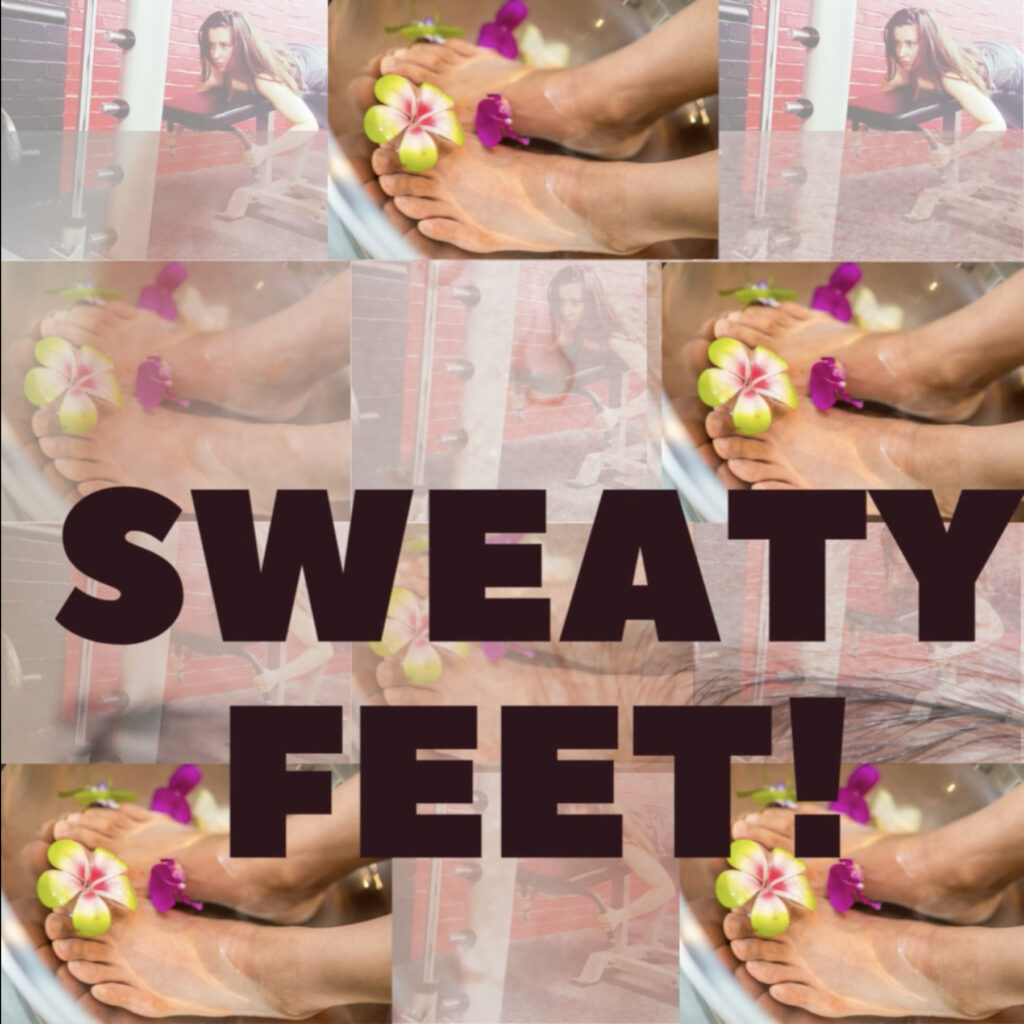Do you have a Sweaty Feet?
Sweaty feet – Did you know that when we sweat too much we have something called… hyperhidrosis!
What is a sweaty feet?
We have more sweat glands per cm in our feet than anywhere else in the body. Sweat glands keep our skin moist and supple to regulate our temperature when the weather is hot such as today! They secrete all the time, not just in response to heat or exercise, like elsewhere in the body.
We have circa 125,000 sweat glands per sole that’s 250,000 in total!
In people who sweat too much without any external stimuli, known as primary hyperhidrosis, sweat gets trapped in the sweat glands, which causes bacteria to grow leading to an overproduction of sweat to clear out the bacteria and odour due to the constant growth of the bacteria.
What causes the problem?
Sweaty feet (along with palms and armpits and the face/scalp) tend to be symmetrical. The exact cause of sweaty feet is unknown but it is due mainly to overactive sweat glands. In some cases, the cause can be genetic.
Other possible causes include stress on the foot caused by a structural problem, or because the foot is under strain or tired, for example when you have been standing on your feet all day.
Complications of hyperhidrosis
Although hot weather can make matters worse, sweaty feet is both a summer and a winter problem as well as an inherited condition. It tends to be a long-term condition, which may require treatment over a sustained period of time.
In some cases, sweaty feet can lead to Blisters or athlete’s foot.
Who gets it?
Mainly and typically in those of us under 25. Sweat glands can become overactive triggered by changing hormone levels in the body. As the sweat glands on the soles of the feet (and hands) respond to emotions, emotional stress can also be a cause.
How do I prevent sweaty feet?
Include a simple daily foot hygiene routine:
- Washing your feet with anti-bacterial soap
- Applying a cooling cream that has rose or peppermint
- Rotate to different footwear every day so they have a chance to dry out
- Over-the-counter foot deodorants can also help reduce foot odour.
- We like clinisept+ spray
What else can I do when I have sweaty feet?
- Elevate your feet. Gravity isn’t your friend when it comes to swelling, so you need to undo its effect on your limbs by making sure you elevate your feet higher than your heart as often as you can.
- Remain moderately active which helps to boost your circulation and get the fluid buildup flowing again. Try some simple stretching/moving during the early evening or morning.
- Drink lots of water and regularly. Too much salt contributes to swelling, so by drinking more water, you can help reduce the amount of salt in your system.
- Control your diet. Some foods are natural diuretics and can provide relief from fluid retention. Foods that have this effect include leafy greens such as spinach and lettuce, green beans, asparagus, pumpkin, onion, pineapple and lemons.
- Support your feet, ankles, and legs. Compression socks or support tights can help you avoid swelling by providing the right amount of pressure to decrease the size of the expanded veins, boost blood circulation and prevent the collection of fluids in ankles and feet.
- Wearing socks is essential especially those that absorb moisture such as bamboo or anything sliver lined. Detachable insoles (and medicated insoles that have a deodorising effect) are recommended as a lot of sweat is absorbed by insoles or the uppers of shoes.
- In terms of footwear, well-fitting shoes made of any modern technology breathable materials are excellent and manufacturers are constantly developing new and better quality materials all the time.
When should I see a podiatrist?
If you experience any foot care issues which do not resolve themselves naturally or through routine foot care within a few weeks, you should seek the help of a healthcare professional.
In some cases, athletes foot and blisters can occur, if this happens contact a GP or a podiatrist.
Frustrated With Your Foot Pain?
- Not sure what to do?
- Not sure who to ask?
Are you suffering from this condition? One of our podiatrist can assist and then recommend what treatment options are best to get you back on track. ✅
Schedule an appointment here or you may call us at 44 (0) 207 101 4000. 📞
We hope you have a feetastic day! 👣☀️
-The Chelsea Clinic and Team




